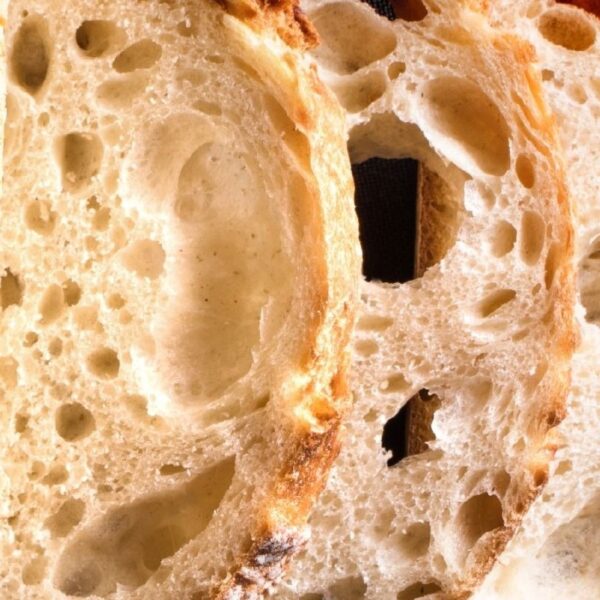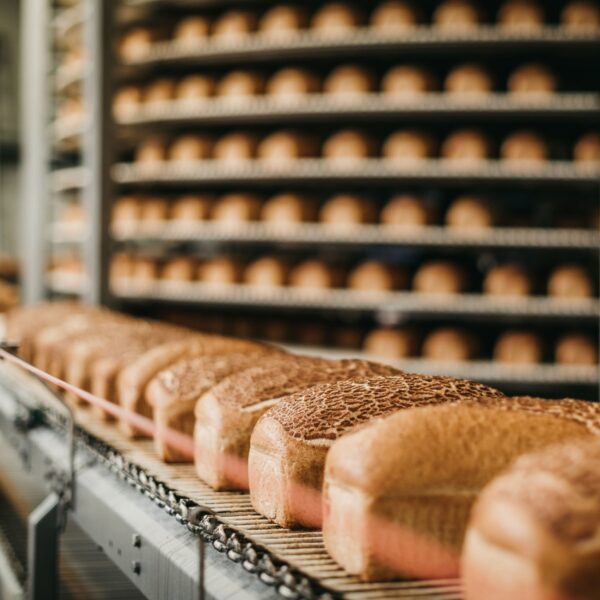Tricalcium phosphate (TCP) has emerged as a multifunctional ingredient with applications that extend beyond essential nutrition. TCP’s versatility can be attributed to its chemical properties, which make it valuable as a nutritional supplement, an anticaking agent, and a firming agent, among other functions.
Understanding tricalcium phosphate begins with its composition and its place within the food chemistry domain. As a calcium salt of phosphoric acid, it contains three calcium ions and two phosphate ion, hence the name ‘tricalcium.’ This compound falls within the category of calcium phosphates, which are commonly used in food processing.
The journey from raw materials to a finished food product containing tricalcium phosphate is intricate and demands stringent control of the production process. TCP is not only significant for its nutritional contributions but also for its functional properties that affect the texture, shelf life, and quality of food products—the methods of synthesizing, refining, and incorporating TCP into foodstuffs interest food scientists and manufacturers. Understanding these processes is essential for ensuring the quality and compliance of the final food products with safety regulations.
What is Tricalcium Phosphate?
Tricalcium phosphate (TCP) is a calcium salt of phosphoric acid with the chemical formula Ca3(PO4)2. It is a white, odorless powder that is insoluble in water but soluble in acids. TCP is commonly used as a food additive, a dietary supplement, and a pharmaceutical excipient. It is also known as calcium orthophosphate, tertiary calcium phosphate, tribasic calcium phosphate, or “bone ash” (the combustion of bone produces calcium phosphate).
Tricalcium phosphate (chemical formula: Ca3(PO4)2) is an inorganic compound and a calcium salt of phosphoric acid. The structure of tricalcium phosphate consists of calcium cations (Ca2+) and phosphate anions (PO43-).
Source: Wikipedia
TCP presents three polymorphs with specific phase transformation temperatures. ꞵ-TCP (rhombohedral) transforms at 1125 °C towards α-TCP (monoclinic) and at 1430 °C, α-TCP towards α’-TCP (hexagonal). The α’-TCP form is only stable above such high temperatures, and reversion toward α -TCP occurs immediately when cooling from it. Instead, α -TCP is metastable at room temperature, and its conversion to ꞵ-TCP requires specialized cooling operations [1]. The wet route and solid-state reaction method can obtain α-TCP from amorphous calcium phosphate [2].
How is Tricalcium Phosphate Produced?
Natural Sources
Tricalcium phosphate can be derived from natural sources such as rock phosphate or bone meal. The natural form is not entirely pure, and some other components like sand and lime can change the composition.
Naturally occurring phosphate rocks also contain appreciable substituents, such as fluorine compounds, which can harm health. Tricalcium phosphate products are prepared by calcining a mixture of phosphate rock, sulfuric acid, and phosphoric acid at a temperature sufficient to affect the evolution of the fluorine [3].
Synthesis
TCP cannot be precipitated directly from an aqueous solution. Typically, a double decomposition reaction involves soluble phosphate and calcium salts. Crystalline tricalcium phosphate can be obtained by calcining the precipitate.
A patented procedure comprises immediately adding di-ammonium hydrogen phosphate to an aqueous solution of calcium nitrate tetrahydrate. Calcination of the recovered precursor powders at 800° C. in air produces ꞵ-TCP. In contrast, calcination at 1200° C., followed by rapid cooling to room temperature, yields submicron-particulate α=-TCP powders [4].
Use of Tricalcium Phosphate in Food and Nutrition
Tricalcium Phosphate is a multipurpose food additive with multiple uses. The physical properties (color, water adsorption capacity, physical form), chemical properties (pH, crosslinking with gelling aids), and nutritional properties (calcium & phosphorus content) are effectively utilized in the food industry to achieve desired effects on the food products added with tricalcium phosphate.
TCP is used as an anti-caking agent, a dough conditioner, and a calcium supplement. It helps prevent clumping and the caking of powdered food products, such as spices, baking mixes, and powdered drinks. TCP also acts as a dough conditioner, improving baked goods’ texture and shelf life. As a dietary supplement, TCP often provides calcium and phosphorus, essential minerals for bone health. It is commonly found in multivitamin and mineral supplements and in calcium supplements. The body quickly absorbs TCP and helps maintain healthy bones and teeth.
Applications in Food and Nutrition
| Function | Description |
| Anticaking agent | Prevents the formation of lumps or clumps in powdered food or other products by absorbing moisture. |
| Clouding agent | Acts as a clouding agent by forming insoluble particles in a liquid, which scatters light and creates a cloudy appearance. |
| Colorant | Improves the whiteness of the product.Adds smoothness and opacity to foods and beverages. |
| Fortificant | Primarily used as a source of calcium in food products.It also provides phosphorus, another important mineral for bone health. |
| Firming agent | Interacts with gelling agents to stabilize foods.Also used as a firming agent in canned fruits and vegetables, helping them maintain their structure. |
| Acidity regulator | Considered basic and is used regularly as an antacid or acidity regulator |
| Flour treatment agent | Improves flowability of the flour. It can also be used to bleach flour and to improve coloring. It also improves stability for frying. |
Product Examples
Here are some examples of products that contain tricalcium phosphate:
| Type | Examples |
| Bakery | Bread, Cake, Biscuits |
| Dairy | Ice cream, Yogurt, Dairy-based desserts |
| Confectionery | Soft chews, Chewing gums, Candies |
| Convenience | Jellies, Canned fruits and vegetables, Sauces, Mayonnaise, Cereal products, Bars, |
| Savory & Culinary | Noodles |
| Beverages | Flavored beverages, Cloudy beverages, Dairy-based beverages |
| Others | Salt bonds, Table sweeteners |
Properties of Tricalcium Phosphate
| Physical Form | Powder |
| Color | White |
| Odor | Odorless |
| Storage Temperature & Conditions | Room temperature in airtight container |
| Molecular Weight | 310.18 |
| Appearance | White amorphous powder |
| Density | 3.14 g/cm3 |
| Chemical Formula | Ca3(PO4)2 |
| pH (50g/l, H2O, 20°C) | 6-8 |
| Melting Point | 1,670 °C |
| Refractive Index | 1.63 |
| Surface area | ≥80 m2/g |
| Solubility | 0.1 g/L |
| Claims (*Product Specific) | Halal*, Kosher* |
Typical Tricalcium Phosphate Formulations
French Dressing
Here is an example of a French dressing formulation table with tricalcium phosphate along with the % weight of ingredients:
| Ingredient | % Composition |
| Cider vinegar (50 grain) | 30 |
| Water | 41.4 |
| Cane sugar | 15 |
| Tomato paste | 3 |
| Tricalcium phosphate | 2 |
| Soybean oil | 3 |
| Oatrim (Water soluble dietary fiber) | 2 |
| Salt | 1.5 |
| Mustard flour | 0.4 |
| Onion powder | 0.8 |
| Xanthan gum | 0.5 |
| Potassium sorbate | 0.1 |
| Garlic powder | 0.1 |
| Paprika oleoresin | 0.2 |
Adding a small but adequate amount of tricalcium phosphate to a low-fat liquid food containing a significant amount of water and a gum thickener helps to eliminate the gloopiness, i.e., the uneven flow characteristics. It also substantially improves the food’s viscosity, flow characteristics, and mouthfeel. It affects the opacity of the food, too, making it more opaque.
Source: Google Patents
Noodle Flour Additive
Here is an example of a flour additive formulation table with tricalcium phosphate along with the % weight of ingredients:
| Ingredient | % Composition |
| Bean gum | 10 |
| Sodium polyacrylate | 5 |
| Sucrose fatty acid ester | 1 |
| Polyglycerol esters | 1 |
| Sodium lactate | 3 |
| Guar gum | 10 |
| Converted starch | 15 |
| Sodium phosphate | 5 |
| Corn starch | 48 |
| Tricalcium phosphate | 2 |
This additive helps to retain the textural characteristics of wheat noodles for a long time (72 hrs) upon soaking in warm water. It helps reduce the breaking and swelling phenomenon in noodles.
Source: Google Patents
Processed Cheese
Here is an example of a processed cheese formulation table with tricalcium phosphate along with the % weight of ingredients:
| Ingredient | % Composition |
| Cheddar (14-21% fat) | 60-82 |
| Cheddar | 0-22 |
| Skim milk or Water | 15-16 |
| Enzyme modified cheese paste | 0.5-2 |
| Salt | 0-0.3 |
| Carrageenan | 0-0.5 |
| Disodium phosphate | 1.0-1.25 |
| Tricalcium phosphate | 1.0 |
| Dipotassium phosphate | 0.5-0.75 |
| Sorbic acid | 0.1 |
| Cheese flavor | As needed |
A reduced sodium processed cheese was made with novel and selective use of certain phosphates, including tricalcium phosphate. Tricalcium phosphate helps to improve the creaminess and smoothness of the processed cheese.
Source: Google Patents
Tricalcium Phosphate Formulation Considerations
Effect on Properties
| Property | Effect |
| Color & Appearance | Color – Tricalcium phosphate imparts white color when added to food formulations. In a study, it helped to reduce the pink color of ground turkey, making it more subtle [5]. Opacity & Cloudiness – Tricalcium phosphate developed opaqueness and smoothness in food products with reduced fat [6]. Tricalcium phosphate, when added to beverages, creates cloudiness [7]. When calcium phosphate is added to a liquid, such as fruit juice or wine, the particles are suspended and scatter light. |
| Taste | Tricalcium phosphate has a very low flavor profile. It does not impart any undesirable notes to the food added. |
| Texture- Strengthening, Leavening | Firming – It helps to maintain the structural integrity of the (canned) fruits and vegetables and prevent them from becoming mushy or disintegrating during processing and storage [8]. Maturing – Tricalcium phosphate is used as a maturing agent in dough to reduce its stickiness and improve the handling properties [9]. |
| Mouthfeel | Tricalcium phosphate improves the texture and mouthfeel of high-fat foods such as mayonnaise and creamy dressings [10]. |
| pH | The breakdown of tricalcium phosphate creates positive and negative ions, which act to regulate pH. This buffering action keeps foods such as dairy products, condiments, candy, and meat products from becoming too basic or acidic. |
| Flow characteristics | Tricalcium phosphate acts as a desiccant, drawing in moisture from its surroundings and preventing the formation of these lumps or clumps. It also has a slightly abrasive texture, which can help to break up any lumps that do form and create a more uniform texture in the final product. In a study, tricalcium phosphate prevented caking in papaya powder to a greater extent compared to other anticaking agents used even after storage of one month [11]. |
Compatibility & Interaction with Other Ingredients
Tricalcium phosphate is incompatible with potent oxidizing agents, strong acids, and alkalis.
Safety and Regulatory Considerations
Regulatory agencies such as the U.S. Food and Drug Administration (FDA) and the European Food Safety Authority (EFSA) oversee the use of tricalcium phosphate in food products. These organizations ensure that TCP is safe for consumption and that products containing TCP meet established standards for food safety.
| FDA Information | Tricalcium phosphate has been affirmed as a food substance generally considered safe (GRAS) [12]. There are no usage limits specified by the FDA when used per good manufacturing practices. |
| EU Information | Tricalcium phosphate (E 341 iii) is a permitted food additive in the EU [13].Tricalcium phosphate can be used as an anti-caking agent in nutrient preparations intended for use in infant formulae and follow-on formulae [14]. |
Safety & Toxicity of Tricalcium Phosphate
Tricalcium phosphate is considered safe to use as a food additive and supplement.
Identification Numbers
| IUPAC Name | Tricalcium diphosphate |
| CAS Number | 7758-87-4 |
| EC Number | 231-840-8 |
| E Number (Food Additive) | E 341 (iii) |
| INS No. (Food Additive) | INS 341 (iii) |
| FEMA Number | 3081 |
Acceptable Limits or Maximum Usage
The acceptable daily limit (ADI) for tricalcium phosphate is specified by the JECFA in terms of group MTDI for phosphorus from all sources is 70 mg/kg bw (as P) [15].
The maximum usage level of Tricalcium phosphate in the food industry per the EU is as follows [16].
| Category | Maximum Usage Level |
| Infant formulae & follow-on formulae | Maximum carry-over 150 mg/kg as P2O5 |
| Processed cereal-based foods and baby foods for infants | Maximum level of 1000 mg/kg expressed as P2O5 |
The average maximum use level according to FEMA for tricalcium phosphate is below [17].
| Category | Average Maximum use level (ppm) |
| Beverages | 1000 |
| Ice cream | 46 |
| Candy | 50 |
| Baked goods | 80 |
| Gelatins & puddings | 700 |
Fun Facts About Tricalcium Phosphate
- The calcium and phosphorus that make tricalcium phosphate were originally formed in the interiors of stars. Supernovae spread These elements throughout the universe, which means the TCP you find in your food has a cosmic lineage.
- TCP is a major component of bone. When you consume it, you’re essentially eating a material similar to what your bones are made of. It’s often used in medical applications, including as a bone graft material in orthopedic surgeries.
- Tricalcium phosphate isn’t only a nutritional supplement for humans; it’s also used in animal feeds to ensure livestock get enough calcium and phosphorus.
- Beyond food, TCP is used in ceramics and as a solidifying agent in plastic. It can also be a fire retardant, making materials less flammable.
- Ever used a piece of chalk? Natural tricalcium phosphate is often found in phosphate rock, which is also used to make chalk. So, in a way, TCP has been helping people write and draw for centuries.
- In geology, phosphate rock containing TCP and other calcium phosphates is an index fossil. This allows geologists to date the layer of rock it’s found, providing clues about the Earth’s past.
- TCP is a helpful ingredient for individuals following a vegan diet because it supplements the diet with calcium, a nutrient less accessible in plant-based diets. It’s often added to plant-based milk and other vegan products to enhance their nutritional profile.
Additional Resources
- NCBI PMC – Tricalcium phosphate (TCP) in baby formula extractions
- Inchem – Seventeenth Report of the Joint FAO/WHO Expert Committee on Food Additives
- Elsevier – Article S0023643818305413
- ResearchGate – Calcium Fortification in Soybean Milk and In Vitro Bioavailability
- GJ Phosphate – Tricalcium Phosphate Powder
- Google Patents – Patent US3241916
- Chemeurope – Encyclopedia entry on Tricalcium Phosphate
Bibliography
- ScienceDirect – Article S0366317519300986
- HAL – Document hal-03871420
- Google Patents – Patent US3241916
- Google Patents – Patent US20030235622A1
- PubMed – Tricalcium phosphate’s impact on color in whole turkey breast
- Google Patents – Patent EP0551170A1
- Google Patents – Patent WO2007146184A2
- Google Patents – Patent US3245807A
- IASRI – E-course resource
- Google Patents – Patent EP0551170A1
- RJPBCS – PDF document 2014_5(2)
- FDA – CFR Title 21, Part 182.1217
- EUR-Lex – Official Journal L 295/2011
- EUR-Lex – Official Journal L 077/2013
- WHO JECFA Database – Chemical 607
- EU Food Feed Portal – POL-FAD-IMPORT-3336
- FEMA Flavor – GRAS Substances (2001-3124)








